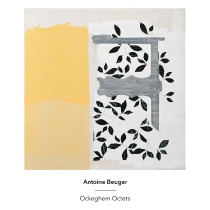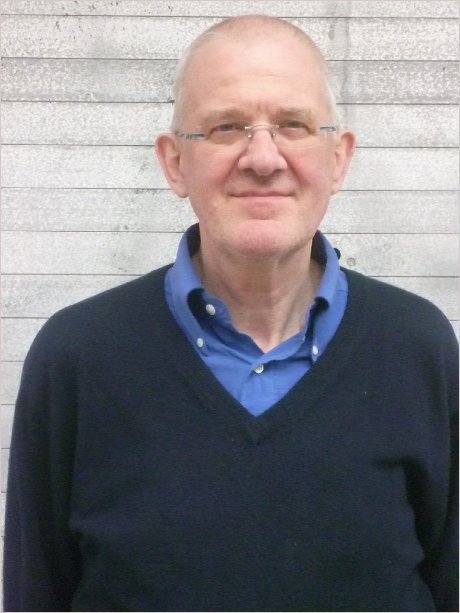Another Timbre TimHarrisonbre

at114 Antoine Beuger - ‘Ockeghem Octets’ (2005)
Ryoko Akama - melodica Seamus Cater - concertina
Kate Halsall - harmonium Sarah Hughes - e-bow zither
Ecka Mordecai - cello Harriet Richardson - flute
Leo Svirsky - accordion Kathryn Williams - alto flute
Total time: 67:47
Interview with Antoine Beuger
As I understand it, the ‘ockeghem octets’ are one of a long series of pieces, each one written for one more musician than the previous piece in the series, starting with the ‘dedekind duos’ and ending with the ‘ihwe tunings for twenty’. What gave you the idea for series?
1996-1998 I had been focusing on solo music or, as i would call it now: music for solo situations, exploring in what ways solitude (as opposed to loneliness) can be reflected and experienced meaningfully in a musical situation.
1998 my musical exploration of “being two”, of the duo, started and is still continuing. you certainly noticed, that a lot of my music is duo music, or: music about “being two”, or, more radically, about love. I strongly believe, that of all the arts, music, the art of sounds appearing and disappearing, the art of approximation (in tuning, timing, sound balancing …), can be the most reminiscent, commemorative, resonant of the single most important event, that human beings may experience in their lives: love. And if music can be this, it should be this. Especially in the constellation that is by itself closest to a love relationship: the duo.
2003, very much inspired by Alain Badiou’s book Number and Numbers, a study of number with a very strong political subtext, it occurred to me, that the number of people, which constitute a group, might have an essential impact on what can happen, which kind of interactions, of sub-groupings etc. may emerge in such a group.
In other words: that going from 1 to 2, or from 2 to 3, etc. is not just adding one, but shifting from one situation to another, different one. Badiou’s book encouraged me to think of each number as having its own “ontology”, constituting its own special “world”, as it were.
My idea then was to create a series of musical situations in which all players do the same: play very long, very soft tones. So it is not their being different from each other, that primarily shapes the musical situation, but their number, their “being two”, their “being five”, …
Of course, the shifts are more overtly dramatic with the smaller numbers, as in real life. But continuing my search I was really surprised, how even situations like “being eleven” or “being seventeen” may induce very specific worlds.
Since 2010 Johnny Chang has been putting the series into practice in Berlin, this way allowing the ensemble Konzert Minimal to gradually emerge along the growing number of players involved in the pieces.
Last year ‘van riel tunings for fifteen’ was performed.
Wandelweiser is stereotypically thought of as being very sparse music, but - perhaps inevitably - pieces for larger ensembles, like the ‘ockeghem octets’, don't sound like this and are quite dense in parts. Were you consciously trying to get away from the stereotype of what Wandelweiser music sounds like?
No. I had been interested in playing and composing music with long, quiet sounds since 2002. Before that my music mostly consisted of rather short sounds immediately disappearing upon appearing. Long, quiet sounds with no specific durations allow the players to focus their attention completely on (the playing of) each individual sound, tuning in with the others, without having to think about coordination or formal intentions. On the sonic surface, this of course creates more continuity or, at times, density.
Like most other Wandelweiser music, these pieces refute any stereotypes, that may exist, all by themselves.
Each of the pieces in the series includes a kind of dedication in its title to someone whose work you admire. Why Ockeghem, and does your piece connect with his actual music in some way?
Each piece is dedicated to one of my “heroes”. They may be visual artists (Tschirtner), philosophers/mathematicians/scholars (Dedekind, Cantor, Jankélévitch, Florenski, Meinong, Routley, Badiou, Ihwe), film makers (Peckinpah, Kiarostami, Ozu, Els van Riel), poets (Mallarmé, Ashbery, Faverey, Gerhardt, Basho, Leopold). In this series Ockeghem is the only composer. Of course I have more than one musical “hero” (John Cage, Froberger, Beethoven being the most important others). Often the namings have to do with sound (dedekind duos, cantor quartets, faverey tunings for fourteen, ihwe tunings for twenty), as is the case here: ockeghem octets. Each of the ockeghem octets also constitutes a kind of double canon, which, of course, links the piece to Ockeghem formally as well.
It's now 25 years since you and Burkhard Schlothauer set up the Wandelweiser collective. Over this period the group and its influence have expanded a great deal, and the work being produced under its name has diversified hugely. What would you say are the key elements of continuity across this period, and what do you see as the major changes? And how do you think it will develop over the next decade or so?
Honestly, I have no idea, how Wandelweiser and whatever and whoever is connected with that name will develop. New composers became involved, bringing new ideas and new relations. Also each composer regularly catches the others with surprise. Paradoxically, if anything, it is the respect towards and the embracement of this never standardizable plurality and discontinuity, that has been the key element of continuity across time. My poet friend Oswald Egger coined quasi-mathematical term “discrete continuity” for this phenomenon.
Maybe it makes more sense to think of Wandelweiser not in terms of aesthetics alone, but rather as a multi-faceted practice, a very open meeting place for people, works, events, ideas, passions, allowing all kinds of unforeseeable work and interactions to germinate and grow into many unexpected directions. For that to (hopefully continue to) happen, I guess, our courage to withstand the lure to be more organised, more well-defined, more in control of what “we” are, or what “Wandelweiser” is, of what people write about "us", more determined about who belongs to “us” and who doesn’t, in short: to withstand the lure to be and to represent something, is probably our main asset.
Recent developments in the world, especially the unbridled conflation of economic and political power in the new USA government (which amounts to the abolition of politics as a value based public interaction between free people), have made me realise even more, that our way of dealing with each other and each other’s work runs completely contrary to these totalitarian developments and that, again, what we do is subversive reality and not mere romantic intention. I could imagine, that Wandelweiser (whatever and whoever that is) will be inspired increasingly by the awareness of this political dimension of what we do.


Reviews
“Wandelweiser music is typically gradual, intent, whispered, sparse, but not big on nameable passions. Yet what does the Dutch composer and co-founder of the Wandelweiser collective, Antoine Beuger, believe “the art of sounds appearing and disappearing, the art of approximation” is most reminiscent of? Love. Not some cool or cerebral kind of love, either: Ockeghem Octets is part of a series of ensemble pieces (starting with duos and expanding from there) in which musicians play long, soft notes to incredibly tender and sensual effect. The choice of instruments is key, with the warm, reedy warble of concertina, accordion and harmonium given a tactile glow by cello, melodica, e-bowed zither and a pair of low flutes. The ensemble sensibility on this recording is heroically controlled, relaxed and attentive to one another’s breathing and pacing. Individual lines fade in and out to make close dissonances or almost harmonies – it’s gentle, tantalising stuff. Artful approximation indeed.”
Kate Molleson, 5-star review in The Guardian
“Between "dedekind duos" (2003) and "ihwe tunings for twenty" (2005), Wandelweiser co-founder Antoine Beuger wrote a series of pieces for groupings of all sizes from two members up to twenty, the scores being published by Wandelweiser. In each piece, the musicians softly play long, sustained notes designated in the score, with the ebbing and flowing tones creating pleasing soundscapes that slowly evolve. Each of the series was dedicated to one of Beuger's heroes, with the name of any series being selected largely for reasons of alliteration, as in "Ockeghem Octets." Another Timbre releases have already featured two other series, the double-disc set of Cantor Quartets (2013) and tschirtner tunings for twelve (The Berlin series no. 5) (2014) by Konzert Minimal. So, numerically, Ockeghem Octets fits in nicely alongside those two.
Recorded in Sheffield in February 2017, this disc features versions of twenty-five of the fifty pages of the Ockeghem Octets score, performed by an octet that includes melodica, concertina, harmonium, e-bow zither, cello, flute, accordion and alto flute. That instrumentation was well chosen as all eight instruments can easily produce sustained notes and their sounds blend together beautifully. Each page of the twenty-five features two lines of four tones which are all played long and softly; four of the musicians play one line of tones, each in their own time, and the other four musicians play the other line. Together, the twenty-five pieces run for about sixty-eight minutes, an average of about two-and-a-half-minutes per piece.
So, there is plenty of variety here because the music changes frequently, but that does not lead to incoherence as the pieces have an overarching unity that binds them all together. Like the albums of Cantor quartets and Tschirtner tunings for twelve, this music belies the oft-repeated stereotype of Wandelweiser music being sparse and punctuated by silences. In the hands of the eight musicians, Beuger's eight notes per piece are transformed into a satisfying series of rich soundscapes replete with drama and emotion. Given that each piece specifies no more than the notes and the playing methodology, it feels as if the octet has performed alchemy. Of course, Beuger deserves due credit for designating series of eight notes that combine so well together. It is remarkable to reflect that, in other hands, the same eight notes could have produced results that were very different but just as impressive...
Antoine Beuger has spoken of the effect on the music of moving from a duo to a trio to a quartet etc. That effect is plain to hear when comparing the quartet, octet and twelve-piece group on the available Another Timbre discs. Of course, there is plenty of scope to fine tune such comparisons by releasing recordings of the missing numbers, quintet, sextet, septet, nonet.... (you get the idea.) On the evidence so far, we must hope they will follow. “
John Eyles, All About Jazz
“"Each page of the score contains two lines of four tones. The tones are all to be played long and softly. Four of the musicians play one line of tones, each in their own time, and the four others play the second line. This recording realises [sic] twenty-five of the fifty pages of the score."
For some reason this music puts me very much in mind of the plate spinner's act seen on television quite often during my childhood. A set of dinner plates would be set spinning on top of long thin dowels, while the audience awaited the inevitable porcelain crash. The difference is that here no crash will be forthcoming. The plates simply wind down or halt. It is in their spinning then that the interest lies.
The pages are interpreted by an ensemble consisting of: Ryoko Akama (melodica), Seamus Cater (concertina), Kate Halsall (harmonium), Sarah Hughes (e-bow zither), Ecka Mordecai (cello), Harriet Richardson (flute), Leo Svirsky (accordion) and Kathryn Williams (alto flute). Reedy chords hover while overtones swell and decay, and there are brief pauses between each page. The chords often move from consonant to dissonant (or vice versa), sometimes within a single page, sometimes with the addition of one instrument, and there are audible beats occasionally as very closely tuned notes mingle. For such a simple score there appears a wealth of detail available to the careful listener. Here's hoping that all fifty pages see realization.”
Jeph Jerman, The Squid’s Ear